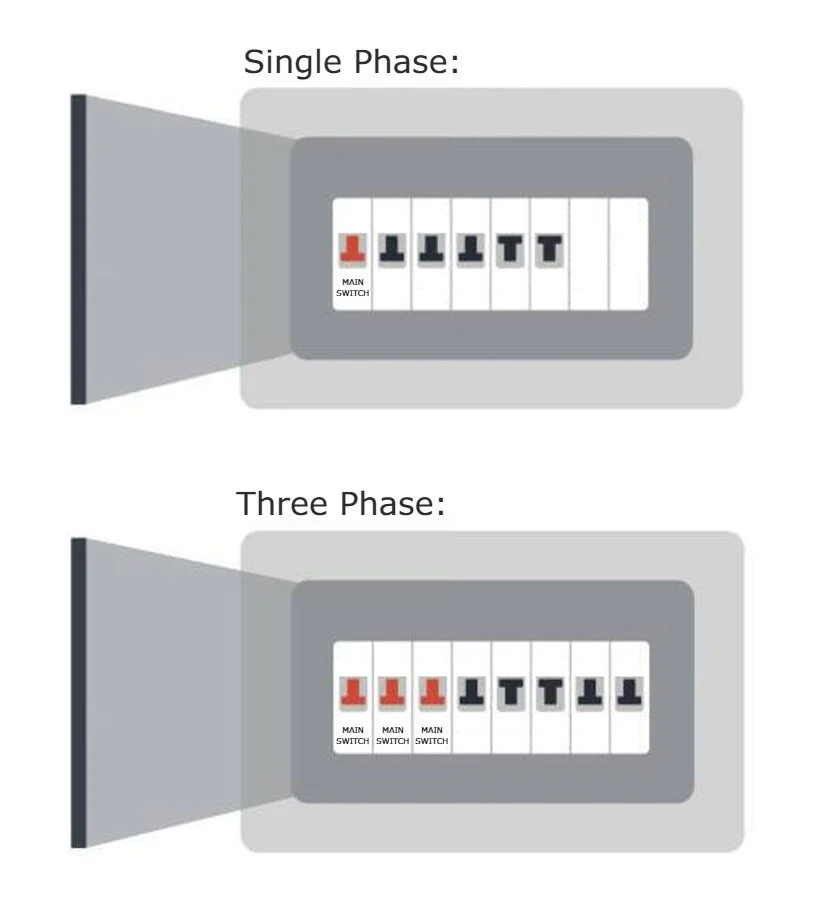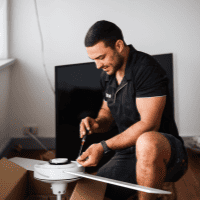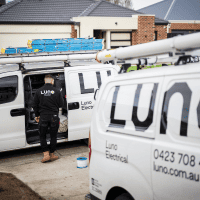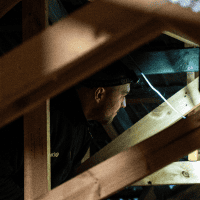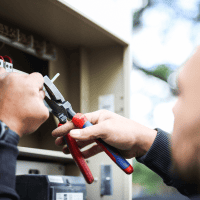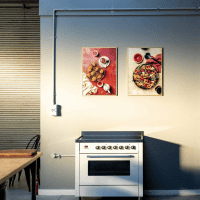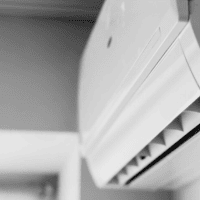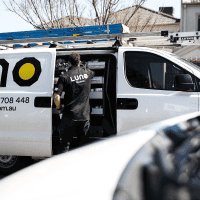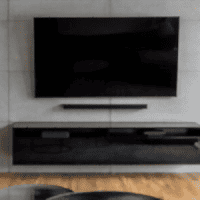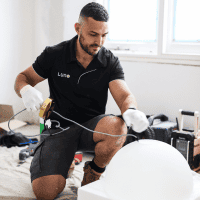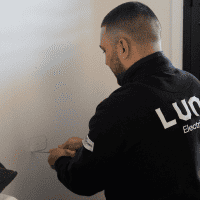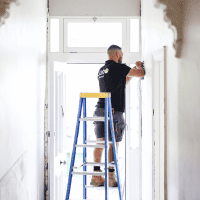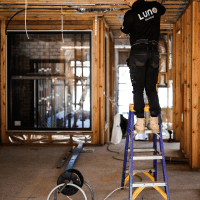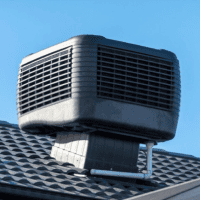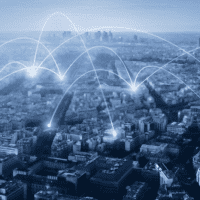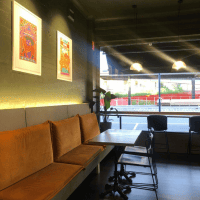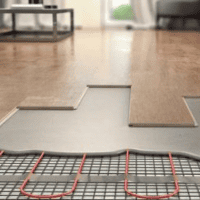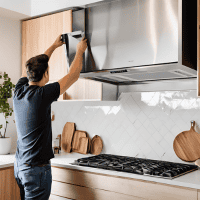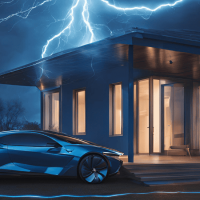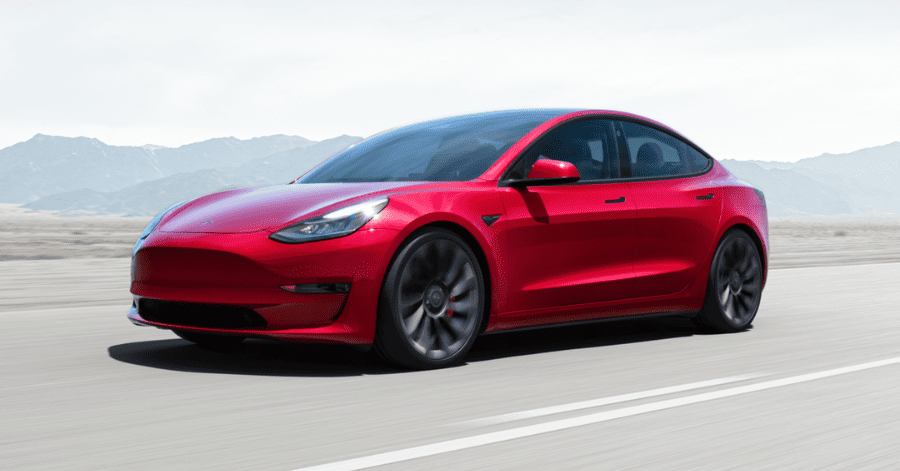Should I Get 3-Phase Power at My House?
Let’s break it down.
✅ You SHOULD consider 3-phase if:
- You have lots of appliances that use a lot of power at the same time. For example, you might have whole house ducted air conditioning, two ovens, a pool pump, EV chargers and spa pumps all going at once. Not to mention the kids all on the internet! That’s going to pull a lot of power that could strain your switchboard. To use our traffic analogy, in peak hour it’s better to be on a 3 lane highway then a one lane road!
- You’re future proofing your property
- The world is moving hard towards electric for everything. For example, 20 years ago most ovens were gas. Now they are mostly electric and they use a lot of electricity. This all means you need to make sure your electrical setup can handle so many electrical appliances on at the same time.
🚫 You MAY NOT need it if:
- You live in a small home or apartment
- You only run standard appliances that don’t draw much electricity.
If you’re not sure, think of us like your sparky GP – we’ll diagnose your power setup and tell you what works best.
Is 3-Phase Power More Expensive?
Installation? Yep, it’s a bigger job.
Running costs? Not necessarily.
Your cost of electricity will be the same (but you might pay a bit more in supply charges from your energy retailer) but 3-phase can actually help large appliances run more efficiently – saving money in the long run.
Plus, it’s better at managing load. So, fewer flickers, trips, and angry toasters.
What’s the Disadvantage of 3-Phase Power?
We like to keep it real.
Downsides:
- Higher upfront cost to install
- May require infrastructure upgrades if your street doesn’t support it
- Overkill for smaller homes with low energy needs
But for many homes and most businesses? It’s more like an investment than a drawback.
Is It Cheaper to Run Single-Phase or 3-Phase?
In terms of day-to-day running costs, they’re similar – unless your appliances are crying out for more power.
Think of it like cars:
- If you’re towing a caravan with a hatchback (single-phase), it’ll use more fuel and wear out.
- If you tow with a 4WD (3-phase), it’s smoother and more efficient.
Right tool. Right job.
What Are the Benefits of 3-Phase Power at Home?
- More power capacity for big-ticket appliances
- Balanced electrical load = less stress on your system
- Future-proofing for EVs, solar, batteries
- Fewer outages and overloads
Basically, if you’re upgrading your lifestyle, it’s worth upgrading your power too.
3-Phase Electricity vs Single Phase – What’s the Difference?
Feature | Single Phase | 3-Phase |
Voltage (AUS) | 230V | 400V between phases |
Suits | Small homes, basics | Big homes, businesses |
Appliance Capacity | Limited | High |
Load Distribution | One wire | Three wires = balanced load |
Common Uses | Lighting, fridges | Aircon, EVs, motors |
What Are the 3-Phase Plugs in Australia?
Your power points stay the same with 3-Phase so no change there. You can get dedicated 3-Phase power points for heavy duty tasks like electric vehicle charging. They look different from your usual wall plug – and for good reason.
- Round pins, typically with 4 or 5 holes
- Often red or industrial in appearance
- Rated for higher loads (10A, 20A, 32A and beyond)
You’ll spot these in workshops, factories, or powering massive pizza ovens.
Why Would a House Need 3-Phase Power?
Because the 21st century isn’t gentle on electricity.
Homes are getting more tech-heavy:
- Electric cars
- Induction cooking
- Solar + batteries
- Big air con systems
All that takes grunt. 3-phase power gives your home the ability to handle more without breaking a sweat (or a breaker).
Key Considerations for 3-Phase Power Installation
Thinking of making the switch? Here’s what to keep in mind:
- Costs: Upgrading to 3-phase power involves installation fees, additional wiring, and potential appliance upgrades. Prices can vary but it can cost around $6,000 to install 3-phase power. We can provide a free quote.
- Technical requirements: Your property must have the infrastructure to support 3-phase power. Older homes might need significant rewiring.
- Australian regulations: Installation must comply with local electrical standards, so hiring a licensed electrician is essential.
- When to upgrade: If you’re installing energy-hungry appliances or experiencing frequent power issues, it may be time to consider 3-phase power.
At Luno Electrical, we make this process seamless, ensuring your home or business gets the power it needs without a hitch. If you’d like to discuss 3-phase power for your home or office contact us for a free quote.
If you want even more information about 3-Phase power read “The Top 5 Things You Need to Know About 3-Phase Power”
Final Thoughts (Before You Blow a Fuse)
If you’re unsure whether your home or business needs 3-phase power – don’t guess. Book a quick inspection with Luno Electrical.
We’ll check your current setup, explain your options in plain English (with bonus dad jokes), and if needed, give you a quote to upgrade – no pressure, no upsells, just honest sparkies doing what we do best.
Need more power? Let’s talk. Luno Electrical – Melbourne’s friendliest team of fully qualified, highly caffeinated electricians.
🚗 We’ll even clean up after ourselves. (And yes, we do 3-phase.)



